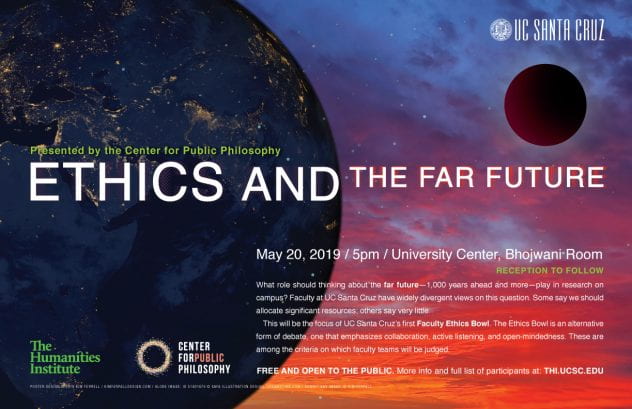This week we will have 2 presentations from Computational Media:
Author: jxp
AAII Seminar: May 29, 2019
When/where: E2-215 at 12pm
Presenter: Jaehoon Lee (Google Brain)
Title: Everything you wanted to know about batch size (in neural net training) but were afraid to ask
Abstract: Recent hardware developments have made unprecedented amounts of data parallelism available for accelerating neural network training. Among the simplest ways to harness next-generation accelerators is to increase the batch size in standard mini-batch neural network training algorithms. In this work, we aim to experimentally characterize the effects of increasing the batch size on training time, as measured in the number of steps necessary to reach a goal out-of-sample error. Eventually, increasing the batch size will no longer reduce the number of training steps required, but the exact relationship between the batch size and how many training steps are necessary is of critical importance to practitioners, researchers, and hardware designers alike. We study how this relationship varies with the training algorithm, model, and data set and find extremely large variation between workloads. Along the way, we reconcile disagreements in the literature on whether batchsize affects model quality. Finally, we discuss the implications of our results for efforts to train neural networks much faster in the future.
Reference: https://arxiv.org/abs/1811.03600
AAII Seminar: May 22, 2019
When/where: E2-215 at 12pm
Presenter: David Haan (PBSE)
LURE (Learning UnRealized Events): Finding New(or Equivalent) Driver Mutation Events using Supervised Machine Learning
Cancer is a genetic disease typically resulting from an accumulation of mutations. Mutations in normal cells generally result in repair or cell suicide. In cancer cells, the mutations accumulate leading to an uncontrolled growth otherwise known as a tumor. There are two broadly defined types of mutations, driver and passenger mutations. Tumors contain around 2-5 driver mutations which cause and accelerate cancer, and about 10-200 passenger mutations which are accidental by products and result of thwarted DNA repair mechanism. The driver mutations are what defines the tumor, subtype and are therapeutic targets.
The Cancer Genome Atlas (TCGA) is a publicly accessible atlas of cancer related data from the National Cancer Institute (NCI). This atlas of data is a comprehensive analysis of 9000 patients and 33 cancer subtypes cataloging mutation data, DNA, mRNA, methylation, and protein expression. In particular, the TCGA study of Papillary Thyroid Carcinoma identified two subtypes, one harboring mutations in BRAF and the other were more RAS-like with mutations in KRAS, NRAS, HRAS. The study identified driver mutations, whether BRAF or H/K/NRAS, in about 95% of the samples, leaving about 5% with no known driver mutations. Here we present a tool, “Learning UnRealized Events” (LURE) designed to identify driver mutations in those samples without known driver mutations.
AAII Seminar: May 15, 2019
Where/when: E2-215 at 12pm
Presenter: J. Xavier Prochaska (Astronomy & Astrophysics)
Title: Activation Atlas
Abstract: While it remains conventional wisdom that Deep Learning techniques are primarily the result of impenetrable “black boxes”, there is a growing effort to peer into the box. I will describe a few of the initial efforts and then focus on the Activation Atlas built by researchers at Google and Open AI. I have been willing to state out-loud that I find this akin to peering into the brain of the network.
Here is the link to the primary paper: https://distill.pub/2019/activation-atlas/
Pizza will be provided.
AAII Seminar: May 8, 2019
No formal presentation this week. Those who attend are encouraged to bring ~5 min of material to discuss. Their own research, a paper that has excited them, etc.
Pizza will be provided.
AAII Seminar: May 1, 2019 at 12pm in E2-215
Ethics Bowl: May 20, 2019 at 5pm
Location: University Center, Bhojwani Room
See the attached poster for a brief summary. Here now is full announcement:
AAII Seminar: April 24, 2019 12pm
E2-215
12-1pm
Ryan Hausen (PhD student, CSE at UCSC)
Title: Morpheus: A Deep Learning Model for Pixel-Level Morphological Classification
Abstract: The majority of astronomy begins with images filled with stars and galaxies of various sizes in arrays that can be hundreds of millions of pixels. From these images, one may study galaxies by their shape yet classifying by morphology can be difficult and often involves an element of subjectivity. Furthermore, doing so with astronomical-scale images is both time and cost-prohibitive if one were to rely on human resources alone. The Computational Astrophysics Research Group at UCSC is leveraging current methods and innovating new techniques in Deep Learning to develop new and more efficient approaches this problem. One such way is Morpheus, a deep learning model that morphologically classifies astronomical images with pixel-level precision. Using Morpheus, astronomers can extract a detailed analysis of the morphological composition galaxies and stars of an image. This kind of information is key to understanding how galaxies form and evolve.
Lecture (April 11, 2019): Barry Lam: Fighting the Future: The Philosophy of Predictive Algorithms in Criminal Justice
Barry Lam
Associate Professor of Philosophy at Vassar College and host of the philosophy podcast Hi-Phi Nation on Slate
2019 THI Scholar-in-Residence
Fighting the Future: The Philosophy of Predictive Algorithms in Criminal Justice
Thursday, April 11, 3:15 – 5:00 pm
Humanities 1 Bldg, Room 202
At different stages of the criminal justice system, from policing, bail hearings, and sentencing, computerized algorithms are replacing human decision-making in determining where to police, who to arrest, who goes to jail, and who goes free. This talk will introduce people to how these algorithms work, the under-appreciated moral problems with their implementation, and how the future of criminal justice depends on decisions we make now about the risks we are willing to tolerate for public safety.
Organized by The Humanities Institute and the Center for Public Philosophy
https://news.ucsc.edu/2019/04/philosophy-podcast-residency.html

